Top Qs
Timeline
Chat
Perspective
Timeline of the American Revolution
From Wikipedia, the free encyclopedia
Remove ads
Timeline of the American Revolution—timeline of the political upheaval culminating in the 18th century in which Thirteen Colonies in North America joined together for independence from the British Empire, and after victory in the Revolutionary War combined to form the United States of America. The American Revolution includes political, social, and military aspects. The revolutionary era is generally considered to have begun with the passage of the Stamp Act in 1765 and ended with the ratification of the United States Bill of Rights in 1791. The military phase of the revolution, the American Revolutionary War, lasted from 1775 to 1783, but the land war effectively ended with the British surrender at Yorktown, Virginia October 19, 1781. Britain continued the international conflict after Yorktown, fighting naval engagements with France and Spain until the signing of the Peace Treaty of Paris in 1783.
- List of military leaders in the American Revolutionary War
- List of American Revolutionary War battles in chronological order, with location, outcome
Remove ads
1600-1649
1603
- Elizabeth I of England, last Tudor monarch dies (March 24)
- James VI of Scotland succeeds to the throne of England as James I, ruling both. Authored previously The True Law of Free Monarchies, asserting the idea of absolutism and the divine right of kings.
1605
- Gunpowder Plot unsuccessful Catholic plot to kill James VI/I by blowing up the English House of Parliament (November 5)
1606

- Virginia Company established as a corporation to colonize the east coast of North America.
1607

- Jamestown founded (14 May) as the first permanent English settlement in North America by the Virginia Company
1609
- Bermuda settled by the English.
1612
- Bermuda officially becomes part of Virginia.
1619
- House of Burgesses established, the first representative legislature in the Americas, meeting in Jamestown, Virginia, (July 19)
- First enslaved Africans arrive in Virginia, August
1620

- Mayflower Compact Nov. 21, 1620, founding document of the Plymouth Colony of Pilgrims, signed aboard the ship Mayflower
- Plymouth Colony established as a self-governing settlement of religious refugees; Pilgrims elect William Bradford governor
- James I asserts sovereignty over the Caribbean island of Nevis.
1623
- St. Kitts colonized by the English.
1624
- Virginia becomes a royal colony
1625
- Barbados claimed for James I of England.
1628
- Nevis settled by the English.
1629
- The Cambridge Agreement (August 26, 1629)
1630
- John Winthrop leads Puritan settlers to Massachusetts Bay.
1632

- Maryland founded as a proprietary colony with a charter from Charles I to Lord Baltimore as a refuge for English Catholics.
- Island of Antigua settled by colonists from St. Kitts.
1634
- St. Mary's City founded, serves as the capital of Maryland.
1635
- Roger Williams banished from Massachusetts, founds Rhode Island colony
- Hartford, Connecticut founded.
1636
- Providence, Rhode Island founded, named for "divine Providence."
- Harvard College, Cambridge, Massachusetts founded; oldest institution of higher education in America; Founding Fathers alumni John Adams and his cousin Samuel Adams
- Thomas Hooker departs Massachusetts and helps found the Connecticut colony
1641
- Grand Remonstrance, list of grievances presented to King Charles I of England by the English Long Parliament on 1 December 1641, a key event, precipitating the English Civil War 1642-49.
1642
- English Civil War breaks out, bloody conflict between Royalists supporting Charles I of England and Roundheads supporting Parliament.
1643
- New England Confederation of colonies established during the English Civil War; primary purpose was to unite the Puritan colonies in support of the Congregational church, and for mutual defense against the Native Americans and the Dutch colony of New Netherland; first cooperative effort of English colonies.
Remove ads
1649-1660

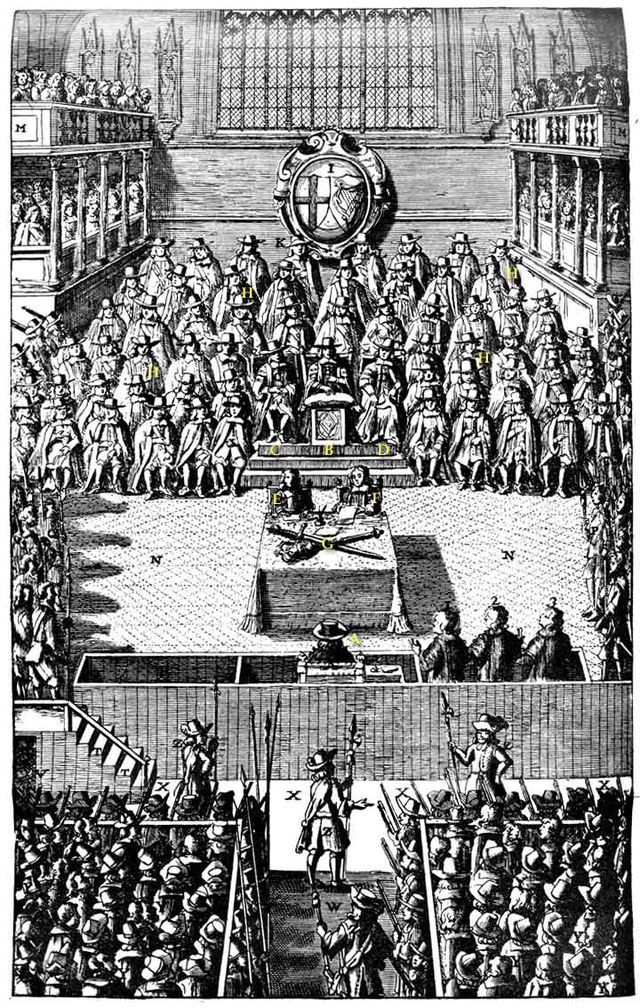



- Trial of Charles I for treason by an ad hoc High Court, found guilty, and publicly executed by beheading. Oliver Cromwell is among those signing the death warrant. 30 January. Charles claimed the court had no jurisdiction to try him, asserting he ruled by divine right. The trial and execution of Charles I remain pivotal events that challenged the traditional ideas of monarchy. Patrick Henry references Charles I's fate in his "Give me liberty or give me death" speech.
- Commonwealth of England, Scotland, and Ireland, republic established 19 May 1649 by Parliament, lasting until 1660, when the monarchy is restored. It was England's first and only republic.
- Maryland Toleration Act 1649, established religious toleration for all Christians, including Catholics. The colony was founded as a refuge for Catholics and protections continued during the Commonwealth.
- Board of Trade established 1650
- Act prohibiting trade with Barbados, Virginia, Bermuda, and Antigua for recognizing Charles II as ruler rather than Parliament. (October 30)
- Navigation Act of 1651, 1652
- Cromwell reforms the navy, increasing the number of ships, promoting officers on merit rather than family connections, and cracking down on embezzlement by suppliers and dockyard staff, thereby positioning England to mount a global challenge to Dutch mercantile dominance.
- First Anglo-Dutch War 1652-53. The Commonwealth challenges the Dutch Republic, seeking to weaken it as a commercial power and carrier of goods.
- Instrument of Government, first written constitution for England, Scotland, Ireland and overseas possessions adopted 15 December 1653. Power was formally split.
- Executive power was held by the Lord Protector. The post was elective, not hereditary, but appointment was to be held for life.
- Legislation was raised in Parliament. These had to be called triennially, with each sitting for at least five months.
- Provision for a standing army was made "of 10,000 horse and dragoons, and 20,000 foot, in England, Scotland and Ireland, for the defense and security thereof" and "a convenient number of ships for guarding of the seas" (XXVII).
- Permanent intolerance of Roman Catholicism.
- First Families of Virginia arrive 1647-60. Major migration of royalists fleeing the Commonwealth of England. Virginia comes to be known as the "Old Dominion" for its loyalty to the crown.
- Battle of the Severn, Maryland, a Puritan force fighting under a Commonwealth flag defeated a Royalist force fighting for Lord Baltimore 25 March 1655
- Jews allowed to resettle in England 1655; banned since 1290.
- Capture of Jamaica from Spain after England's failure to take Hispaniola. May 1655. Jamaica becomes Britain's richest possession, producing sugar with black slave labor.
- Jews allowed to settle in Newport, Rhode Island, a major center of colonial trade. 1658.
- Death of Oliver Cromwell 1658, succession of his ill-prepared son Richard Cromwell as Lord Protector
- Resignation of Richard Cromwell 1659.
Remove ads
1660-1688
1660
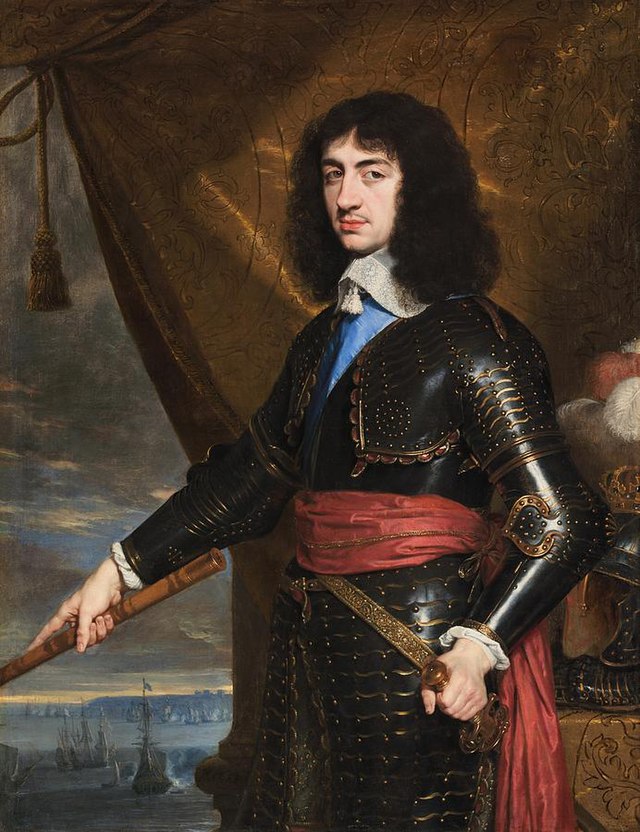
- Restoration of the Stuart monarchy, Charles II returns from European exile
- Declaration of Breda (4 April 1660) Charles promises a general pardon for crimes committed during the English Civil War and the Interregnum for all those who recognized Charles as the lawful king; religious toleration; and the payment of arrears to members of the army, and that the army would be recommissioned into service under the crown.
- Royal authority returns to the colonies
1663
- Carolina proprietors receive a royal charter for Carolina colony
1664
- English seize Dutch colony of New Netherland, renaming it New York
- Charles II grants New York to his brother James, Duke of York as proprietor. He subdivides it and creates New Jersey.
- Delaware colony founded.
1670
- Charles Town, South Carolina founded
1676-77
- Bacon's Rebellion of English frontiersmen Virginia against the royal governor William Berkeley for his failure to drive Native Americans from Virginia; rebels torch the capital of Jamestown.
1679
- Province of New Hampshire granted a royal charter.
1682
- Philadelphia founded by William Penn, proprietor of the Pennsylvania colony.
1683
- The Lords of Trade issue quo warranto writs for the charters of several North American colonies, including Massachusetts (June 3)
1684
- Revocation of the Massachusetts Charter by Charles II (June 18)
1685
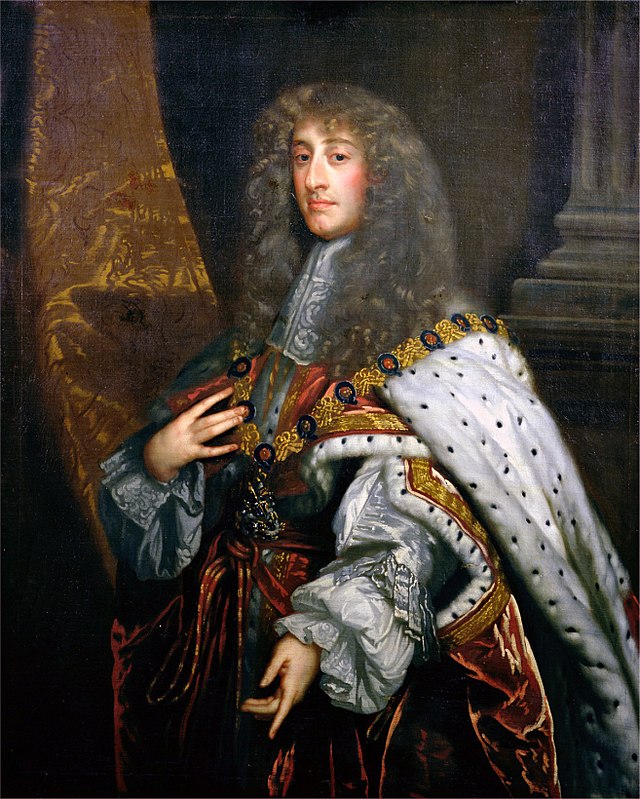
- Charles II dies with no legitimate offspring; succeeded by his younger brother, James II.
1686
- Disestablishment of the New England Confederation
- Royal Charter arrives in Boston establishing the Dominion of New England in America (May 14), centralizing the administration of formerly separate crown colonies in New England and the Middle colonies during the reign of James II of England
1688

- Ouster of Catholic James II of England as monarch by Protestant royals William IIIJames's nephew and Mary II, James II's daughter, becoming joint monarchs after the Glorious Revolution but with power held by Parliament
Remove ads
1689-1700
1689
- 1689 Boston revolt, Leaders of the former Massachusetts Bay Colony reclaim control of the government. In other colonies, members of governments displaced return to power (April 18)
- Leisler's Rebellion in New York, breaking territory away from the Dominion of New England, ending in 1691.
- Protestant Revolution (Maryland), also known as Coode's rebellion, overthrew the Catholic proprietary government.
1690
- Massachusetts Bay Colony the first to issue paper money, with other colonies following.
1691
- William III and Mary II approve the charter formally establishing the Province of Massachusetts Bay (October 7)
1693
- College of William & Mary founded in Williamsburg, Virginia. Second institution of higher education in the colonies. Founding Fathers Thomas Jefferson and James Monroe attended.
1699

- Williamsburg becomes the capital of Virginia, named after William III.
Remove ads
1700–1765
1701
- Yale College, New Haven, Connecticut founded. American Revolutionary War hero alumnus Nathan Hale.
1702
- Queen Anne's War prompts German migration to American colonies.
1706

- Benjamin Franklin born in Boston (January 17), oldest of the Founding Fathers
1722
- Samuel Adams born in Massachusetts (September 27)
1732

- Georgia Colony royal charter granted to James Oglethorpe by George II of Great Britain, to be a buffer zone between the Carolinas as Spanish Florida
- George Washington born in Virginia (February 22)

1733
- Savannah, Georgia founded by James Oglethorpe
- Molasses Act passed by Parliament, affecting the colonial molasses trade
1735
- John Adams born in Massachusetts (October 30)
1737
- George II of Great Britain succeeds to the throne.
1739
- Stono Rebellion, South Carolina slave insurrection, largest in the colonial era.
1740
- Negro Act of 1740 passed by the South Carolina Assembly in the wake of the Stono Rebellion
- Plantation Act 1740 by Parliament defined the conditions under which Christian aliens could become naturalized subjects of the British crown.

1743
- Thomas Jefferson born in Virginia, (April 13)
1746
1747
- Ohio Company of Virginia formed, land speculation company
1748
- Lord Halifax appointed head of the British Board of Trade, the only royal office dealing solely with the American colonies; attempts to end previous royal policy of salutary neglect of colonial affairs, allowing much local autonomy and loose oversight of royal officials. Implementation of a new, unitary and restrictive approach to royal control largely a failure, but renewed in 1763, after the Seven Years' War, called in colonial America the French and Indian War[1]
1749
- Parliament passes the Currency Bill; includes a clause declaring that "any colonial legislative enactments contrary to [government] instructions null and void"; pushback from colonial agents and government reserved this for "future consideration."[2]
- Halifax is founded as the capital of Nova Scotia (June 21)
1751

- James Madison born in Virginia (March 16).
1754

- French and Indian War (1754–1763), a nine-year conflict, the North American portion of the global conflict of the Seven Years' War; colonial militias play a role; Virginia planter, Col. George Washington makes a name for himself as a military leader
- Albany Congress, the first time in the 18th century that American colonial representatives meet to discuss some manner of formal union; attempts to gain Iroquois support (June 18–July 11)
- King's College founded New York City; Founding Fathers alumni Alexander Hamilton, John Jay, Robert R. Livingston, Gouverneur Morris, Hercules Mulligan
1755

- The Mitchell Map, Map of the British and French Dominions in North America is published by cartographer John Mitchell, showing the western boundaries of English colonies extending beyond far past Mississippi River; political assertion by Britain of territory it disputed with France; used in the treaty negotiations ending the Revolutionary War in 1783.
- College of Philadelphia later named University of Pennsylvania founded by Benjamin Franklin, who remained a trustee until his death.
1757

- Prime Minister William Pitt commits to all-out effort in the Seven Years' War, incurring massive debt for the royal treasury
- Alexander Hamilton born British Caribbean island of Nevis (January 11)
1759-60

- British Army defeats French Army in New France
- Quebec, capital of New France falls to the British
- Montreal falls to the British
- Pierre de Rigaud, Governor of New France, capitulates to Field Marshal Jeffrey Amherst. This ends most fighting in North America between France and Great Britain in the French and Indian War. Amherst becomes the first British Governor-General of territories that would later become Canada plus lands (Ohio Country and Illinois Country) west of the American Colonies (September 8

1760
- King George II of Great Britain dies and is succeeded by his grandson George III (October 25)
1763

- The Treaty of Paris (February 10) ends the Seven Years' War (1756–1763), called in North America the French and Indian War (1754–1763). France cedes most of its territories in North America to Great Britain, but Louisiana west of the Mississippi River is ceded to Spain. France also recognized the sovereignty of Britain over the islands of Dominica, Grenada, Saint Vincent and the Grenadines, and Tobago. George III is dissatisfied with the terms of the treaty, which he deems favorable to the losing powers France and Spain rather than the winner, Great Britain.
- George Grenville becomes Prime Minister (April 16) - a hardliner, who implemented policies to make the colonies contribute to paying off the massive debt from the Seven Years' War and assert Parliament's authority over the colonies.


- Pontiac's War is launched by a Native American confederation in the Great Lakes region under the overall command of the eponymous Ottawa chief. Previously allied with France, they were dissatisfied by the policies of the British under Amherst (April 25, 1763 – July 25, 1766)
- Royal Proclamation of 1763 establishes royal control in territories newly ceded by France, land to which some English colonies claim. To prevent further violence between White settlers and Native Americans, the Proclamation sets a western boundary on the American colonies (October 7). American colonies view this as a limitation on their previous rights to continue expansion westward that encroached on Native American territory.
- Navigation Acts re-enforced by George Grenville as a part of his attempt to reassert unified economic control over the British Empire following the Seven Years' War
1764
- Sugar Act also known as uthe American Duties Act (April 5), intended to raise revenues, and the Currency Act (September 1), prohibiting the colonies from issuing paper money, are passed by Parliament. These Acts, coming during the economic slump that followed the French and Indian War, required that colonists contribute to paying off the war debt and lead to colonial protests.
Remove ads
1765–1774
1765

- Bankruptcy of Boston private banker and military contractor Nathaniel Wheelwright, who fled to Guadaloupe, leaving £170,000 in unpaid debts resulting in financial disaster for Boston's economy.[3]

- Stamp Act enacted by Parliament (March 22) to impose control and help defray the cost of keeping troops in America to control the colonists, imposing a tax on many types of printed materials used in the colonies. Seen as a violation of rights, the Act sparks violent demonstrations in several Colonies. In May, Virginia's House of Burgesses Patrick Henry sponsors the Virginia Resolves claiming that, under British law, Virginians could be taxed only by an assembly to which they had elected representatives
- Quartering Act (March 24), act of Parliament requiring the Colonies to provide housing, food, and other provisions to British troops. The act is resisted or circumvented in most of the colonies. In 1767 and again in 1769, Parliament suspended the governor and legislature of New York for failure to comply

- Virginia Resolves (May 29) passed by the House of Burgesses, mainly authored by Patrick Henry, defends colonial rights against Parliament's action; widely disseminated in the colonies.
- Sons of Liberty created in Boston with Samuel Adams prominent
- Stamp Act Congress, gathering of delegates from 9 colonies which adopts (October 19) a Declaration of Rights and Grievances and petitions Parliament and the king to repeal the Act
1766

- William Pitt, 1st Earl of Chatham becomes Prime Minister (July 31), serving until 1768.
- Stamp Act repealed by Parliament; Declaratory Act simultaneously issued asserting Parliament's "full power and authority to make laws and statutes ... to bind the colonies and people of America ... in all cases whatsoever"; designed to overrule actions by the legislative assemblies of each colony, which had traditionally held authority (March 18)
- Liberty pole erected in New York City commons in celebration of the Stamp Act repeal (May 21). An intermittent skirmish with the British garrison over the removal of this and other poles, and their replacement by the Sons of Liberty, rages until the Province of New York is under the control of the revolutionary New York Provincial Congress in 1775
1767

- Townshend Acts - renewed Parliament assertion of its right to tax the American colonies after the repeal of the Stamp Act, placing duties on many items imported into America, including tea (June 29). The American colonists, who were denied any representation in Parliament, strongly condemned the Acts as an egregious abuse of power.
- Letters from a Farmer in Pennsylvania by John Dickinson responds to the Townshend Acts
1768

- Massachusetts Circular Letter (February) by Samuel Adams asserts the Townshend Acts are unconstitutional. British Secretary of State for the Colonies orders colonial governors to stop their own assemblies from endorsing the letter; he also orders the governor of Massachusetts to dissolve the General Court if the colonial assembly does not revoke the letter. By month's end, the assemblies of New Hampshire, Connecticut and New Jersey have endorsed the letter.

- Liberty Riot (June 10) Mob violence in Boston attacking customs officials seizing the ship Liberty of John Hancock for smuggling. British send a warship armed with 50 cannons to occupy Boston harbor to impose order.
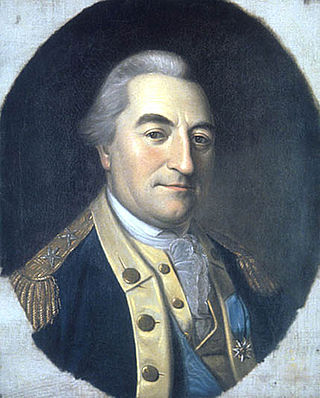
- Royal governor of Massachusetts dissolves the assembly (July) after the legislature defies his order to revoke Samuel Adams's circular letter. In August, in Boston and New York, merchants agree to boycott most British goods until the Townshend Acts are repealed. In September, at a town meeting in Boston, residents are urged to arm themselves. Later in September, more British warships sail into Boston Harbor; two regiments of British regular infantry land in Boston and set up permanent military occupation.
- France sends military officer Johann de Kalb on a covert mission to assess American resistance to the British; he later becomes a general in the Continental Army, dies in combat
1769
- To the Betrayed Inhabitants of the City and Colony of New York broadside published anonymously by local Son of Liberty Alexander McDougall (December 16)
- Hancock’s confiscated ship was refitted in Rhode Island to serve as a Royal Navy ship, renamed HMS Liberty, and then used to patrol off Rhode Island for customs violations. On 19 July 1769, the crew of Liberty under Captain William Reid accosted Joseph Packwood, a New London captain, and seized and towed two Connecticut ships into Newport. In retribution, Packwood and a mob of Rhode Islanders confronted Reid, then boarded, scuttled, and later burned the ship on the north end of Goat Island in Newport harbor as one of the first overt American acts of defiance against the British Crown.
1770

- Golden Hill incident in New York involving the Sons of Liberty; British troops wound civilians, including one death (January 19)
- Lord North becomes Prime Minister of Great Britain (January 28), serving until 1782, essentially the entire span of the war
- Shooting of Christopher Seider (February 22)
- Boston Massacre (March 5), a small number of British soldiers harassed by a crowd of 300-400 Bostonians fired upon the civilians, killing 5
1771
- Battle of Alamance in North Carolina (May 16)
1772
- Samuel Adams organizes the Committees of Correspondence
- Pine Tree Riot (April 13–14), New Hampshire colonists' resistance to royal regulations on the cutting of pine trees
- The Watauga Association in what would become Tennessee declares itself independent (May)
- Gaspee Affair (June 9)
1773

- James Rivington's New-York Gazetteer begins publication (April 22)
- Tea Act passed by Parliament, requiring the colonies to buy tea solely from the East India Company rather than a variety of sources now deemed illegal (May 10)
- Association of the Sons of Liberty in New York published by local Sons of Liberty (December 15)
- Colonists in all major ports refuse to allow tea to be landed
- Boston Tea Party (December 16)
1774
- Benjamin Franklin, Massachusetts' agent in London, is ridiculed before Parliament (January 29)[4]
- Lord Dunmore's War (May–October)
- General Thomas Gage appointed military governor of Massachusetts (May 13), replacing civilian governor Thomas Hutchinson
- British Parliament passes a series of bills, called in the colonies the Intolerable Acts, to punish Boston for the Boston Tea Party including:

- Boston Port Act (March 31) - closing the port
- Administration of Justice Act (May 20)
- Massachusetts Government Act (May 20)
- A second Quartering Act (June 2)
- Quebec Act (June 22) set the terms for the governance of territory won from France in the French and Indian War; continuation of French civil law and governmental, and toleration of Catholicism; the territorial boundaries extended through the Ohio Valley, which the colonies of Virginia, Pennsylvania, and Connecticut colonies claimed by their charters and expected to profit from by land sales to white settlers, ignoring the claims of Native Americans.
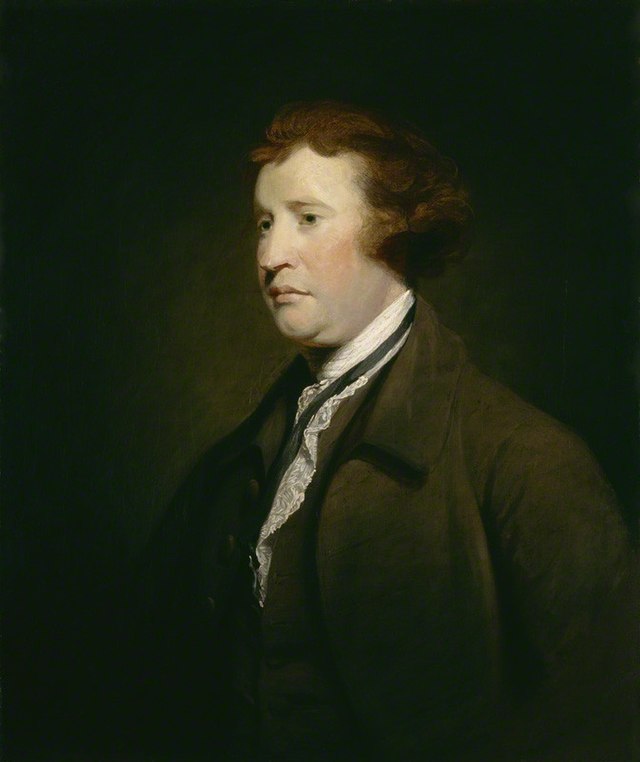
- Anglo-Irish MP Edmund Burke delivers the speech On American Taxation in Parliament, calling for a repeal of the Townshend acts, warning that the draconian and punitive policies against the Americans were wrong and would be counterproductive. He had the speech printed and it was widely distributed.

- Powder Alarm, General Gage's secret raid on the Cambridge powder magazine (September 1)
- First Continental Congress, (September 5 – October 26); 12 colonies send delegates; major actions:
- Joseph Galloway's Plan of Union debated September 1774, calling for the creation of a Grand Council for the American colonies, with each having representation and hold and exercise power within the British Empire; rejected by the Continental Congress.[5]
- Declaration and Resolves of the First Continental Congress, also known as Declaration of Rights (October 14)[6]
- Continental Association created (October 20)[7]
- Petition to the King (October 26) to repeal the Intolerable Acts; addressed to George III, but since 1688 the monarch could not act independently of Parliament, which had passed the acts
- Suffolk Resolves, Suffolk County, Massachusetts (September 9)
- Burning of the Peggy Stewart (October 19) in Annapolis, Maryland for contravening calls to boycott British tea landings, "the Annapolis teaparty"
- Capture of Fort William and Mary (December 14)
- Greenwich Tea Party (December 22)
Remove ads
Wikiwand - on
Seamless Wikipedia browsing. On steroids.
Remove ads
